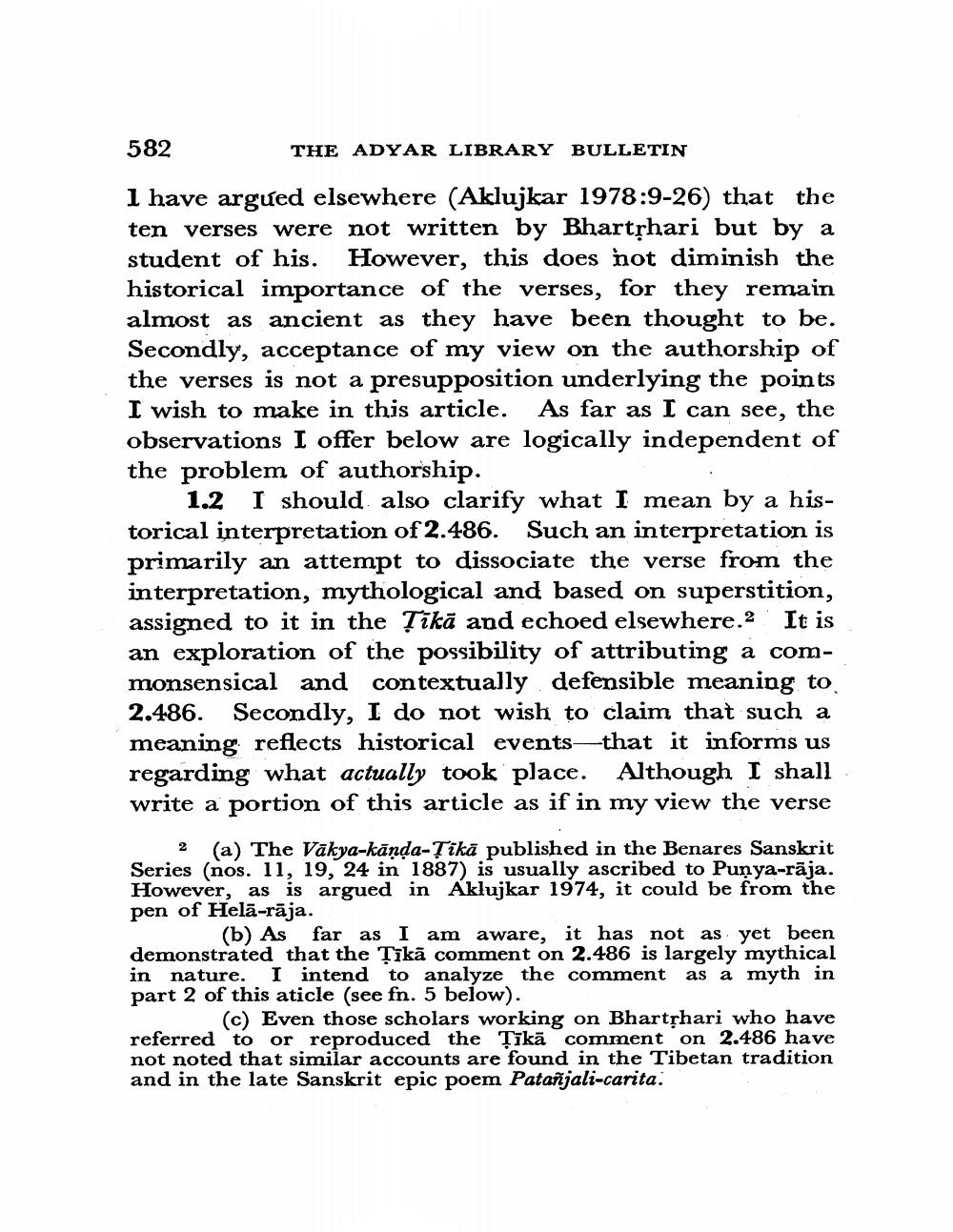Book Title: Interpreting Vakyapadiya Historically Author(s): Ashok Aklujkar Publisher: Ashok Aklujkar View full book textPage 2
________________ 582 I have argued elsewhere (Aklujkar 1978:9-26) that the ten verses were not written by Bhartṛhari but by a student of his. However, this does not diminish the historical importance of the verses, for they remain almost as ancient as they have been thought to be. Secondly, acceptance of my view on the authorship of the verses is not a presupposition underlying the points I wish to make in this article. As far as I can see, the observations I offer below are logically independent of the problem of authorship. 1.2 I should also clarify what I mean by a historical interpretation of 2.486. Such an interpretation is primarily an attempt to dissociate the verse from the interpretation, mythological and based on superstition, assigned to it in the Tika and echoed elsewhere.2 It is an exploration of the possibility of attributing a commonsensical and contextually defensible meaning to 2.486. Secondly, I do not wish to claim that such a meaning reflects historical events that it informs us regarding what actually took place. Although I shall write a portion of this article as if in my view the verse THE ADYAR LIBRARY BULLETIN 2 (a) The Vakya-kanda-Tikä published in the Benares Sanskrit Series (nos. 11, 19, 24 in 1887) is usually ascribed to Punya-rāja. However, as is argued in Aklujkar 1974, it could be from the pen of Helä-rāja. (b) As far as I am aware, it has not as yet been demonstrated that the Ţīkā comment on 2.486 is largely mythical in nature. I intend to analyze the comment as a myth in part 2 of this aticle (see fn. 5 below). (c) Even those scholars working on Bhartṛhari who have referred to or reproduced the Tīkā comment on 2.486 have not noted that similar accounts are found in the Tibetan tradition and in the late Sanskrit epic poem Patanjali-carita.Page Navigation
1 2 3 4 5 6 7 8 9 10 11 12 13 14 15 16 17 18 19 20 21
